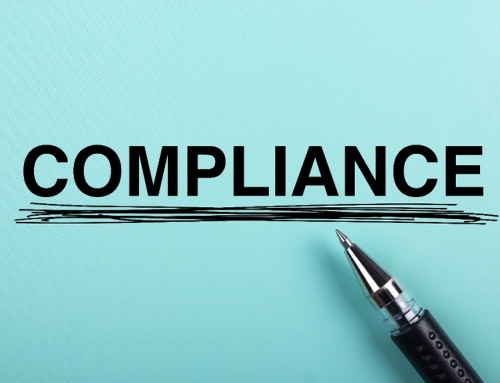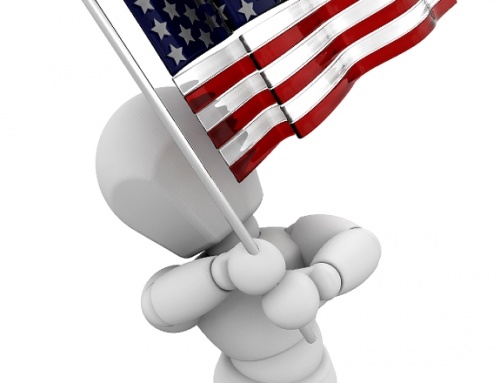As a consultant visiting practices, over 2000 in the past quarter century, I have gotten to see many variances from “normal”, whatever “normal” is for the region and type of practice. In 2004, the AVMA asked me to be the practice-level spokesperson to roll out the Think Twice For Life program, with a FDAH sponsored client friendly web site, stressing wellness surveillance consultations twice a year for companion animals. In 2011, the AVMA closed the Think Twice for Life site, and initiated a new Pet Preventive Care (wellness) program, Partnership for Preventative Pet Healthcare. These national initiatives have made me realize that veterinary practices has never learned how to price wellness care; most are still curative medicine based. Sure, practices have adjusted to commodity items (e.g., pet population surgery), where the market determines the fee schedule comfort zone, but we never looked at it as wellness care pricing, so we did not learn from the experience. Then in recent years, Internet and catalog sources, as well as colleagues down the street, have caused flea, tick and heartworm products to become “commodity items’, reducing the mark-up in most practices. Again, we never looked at it as wellness care pricing, so we did not learn from the experience.
Our profession has evolved as a doctor-centered environment, yet to be competitive; we must become client-centered. In the days of one practice per town, mostly ambulatory, doctor-centered format, worked very well since it was a one-to-one relationship with the clients. In multi-doctor practices, Core Values, Standards of Care and Mission Focus are used to ensure consistency and continuity of care. In a multi-practice community, to be a truly successful practice, client-centered service must become paramount, which is measured by return visits rather than cost of any one specific encounter. This is called client bonding!
Now there is competition starting for urgent care as well as emergency practice services, and most emergency practices have not learned to differentiate between emergency medicine (pain management, empirical stabilization, differential then transport back to Referring veterinarian – RDVM) and critical care (diagnostic intensity for the benefit of the patient). We are seeing a shift in allegiance between the “only emergency practice in town” versus the “multiple choices” for out-of-hours care. When emergency practices are averaging four-digit client transactions ($1000 to $1600 average fee), the three digit ($300 to $500) average client fee of the new urgent care practice has a significant advantage
with soliciting RDVM referrals. We have seen as high as a seventy percent client loss from these practices which do differentiate between emergency services and critical care services (RDVMs must be consulted before an internal case management decision is made for critical care services to be added to urgent care or emergency services referral). The following article provides the rationale for this thesis and fee differentiation.
BACKGROUND
The average American consumer has about $300 of discretionary dollars available on their credit card (versus the average Australian with only $120 of discretionary dollars available). This concept should NOT drive our healthcare plan, but it has a role within commodity pricing, as well as practice positioning. Look at the reality of fiscal experiences within our profession:
- Average patient transaction, companion animal……………………………. $80 to $150
- Average patient transaction, companion animal, southern CA……. $140 to $250
- Average emergency transaction in urgent care practice………………….. $150-$300
- Average emergency transaction in Emergency practice………………….. $350-$700
- Average critical care transaction in specialty practice………………….. $1000-$5000
Sure, there are fee variances within a region and even within a community, but it is important to note, the ‘levels of care’ for practice positioning is different than the consistency needed in standards of care between providers (‘levels of care’ were explored in the 2000 text, Veterinary Healthcare Services: Options in Delivery, Blackwell Press). The old NCVEI had a benchmark system based on self-solicited averages, VECCS, VHMA and AAHA uses averages in their reports, Veterinary Economics publishes practice averages as well as ‘well-managed practice” averages; seldom defining “average”, which according to my definition, in simplest terms, “the best of the worst” or “the worst of the best”.
It would be nice if we had a simplified way of reporting true net, but accounting source data is generally too variable for a reliable system. So as a profession we center on expense percentages. As a seasoned consultant, I can share a few expense “facts of life”:
- We know from experience that a mature general companion animal practice can spend about 43% in compensation (W-2) and still have 10 percent for ROI as well as 9-15 percent true net. In Australia or New Zealand, that compensation factor must be below 40% to achieve a balanced budget.
- We know from experience that a mature specialty or emergency practice can spend about 50% in compensation (W-2), set aside 10 percent for shareholder ROI, and still have 5-14 percent true net.
- Most practices have their expenses controlled within two annual business cycles; changes of just 1 percent savings in an expense line item becomes a major effort. The same effort directed toward many of the wellness surveillance programs causes a 10 to 45 percent increase in income, which is a far easier way to decrease expenses (as a percentage of gross income).
- Most practices do not routinely match their income centers with the expense centers, so they are unaware of net per line item (e.g., Pharmacy resale income compared to resale pharmacy purchases in the same period).
- The accountants love to group all income into a P&L category called sales/revenue, and bury line item expenses into a category called pharmacy/medical expense.
- If retail Pharmacy Sales are $50.000 for the period, and the mark-up on drugs has been set at 2.4 plus a reasonable dispensing fee, then pharmacy expenses should be less than $20,800 in the same period.
- If there were 56 surgeries, then there should be at least 56 anesthesias and 56 IOF (yes, intra-operatory fluids must be tracked separately from metabolic fluid therapy) in the same period (except New York where anesthesia is REQUIRED for X-ray, and must be added-in).
- The AAHA paired chart of accounts (income matched to expense) has become the industry standard since it’s introduction 25 years ago, but many practices have not yet forced their accountant to implement the veterinary system for better comparisons and communications within the profession
Full cost accounting is most effective when used for start-up practices; sunk costs do not need to added into a new program being added to the services already being offered for “appropriate pricing” to occur.
Some overhead expenses must be managed on a continuing basis. For instance, in the USA, medical insurance is needed to keep staff; 78 percent of all practices offer individual health insurance programs in some form. To have the best program, a balance between inpatient deductible and outpatient deductible must be adjusted for the demographics of your staff, requiring routine assessment (i.e., with a young staff, inpatient deductible could be $1000, and covered by the practice, so outpatient co-pay can stay nominal).
There is NO expense offset by discounts; discounts are pure net being given away, and most general practices only have 8-15 percent true net (after clinical compensation, ROI, balance sheet monies and reasonable rent is paid). Discounts intuitively tell your clients that you believe your established fees are too high, and when applied as a recurring seasonal-based program, causes false seasonal access trends (and delayed client action).
- Only Congress believes we can be taxed into prosperity; all others must produce more income than expenses.
CURATIVE MEDICINE vs WELLNESS MEDICINE PRICING
In curative medicine (25 to 30 percent of a general practices caseload), case management belongs to the attending doctor, so fees must include the professional knowledge being brought to bear on the case at hand. Preventive medicine usually accounts for the balance (70 to 75 percent) and has been subject to commodity comparisons. In wellness surveillance, protocols are established and carried out by staff, so fees need not include the professional knowledge for case management decisions; this is a new income center for most general practices, and the AAHA Compliance Survey shows under full compliance services, an average loss in excess of $600,000 per doctor per year is occurring). Wellness surveillance must be appropriately priced to ensure client acceptance, and to do so means knowing true cost of each procedure (excluding sunk cost). For a general practice, look at something as simple as dental cleaning (a “client friendly” service term): pre-anesthesia lab (Veterinary Anesthesiology Specialists say a PCV, TP, and BUN is all that is needed for a risk level one young healthy animal) is less than $5; pre-anesthesia pain management with morphine is about $1; I.V. TKO (I.V. To Keep Open = IOF) is slow drip using 500 ml bag and simple extension set with catheter) about $5 cost; induction with the best non-residual agent is about $7 (some day the USA will be using Alfaxin, with better blood pressure profile); gas anesthesia (Iso) is about $2.50 for 20 minutes; we have a direct cost of about $21, but if we do enough, we must add a dental hygiene tech to our staff, so that adds about $7-8 per 20 minutes (compensation, taxes, benefits, etc.). The rest is sunk cost, support already being funded by other programs. So we have three questions
- What do we need to charge to make a profit equal to pharmacy sales?
- What can we charge and get high client acceptance/satisfaction?
- What do we need to do to increase return rates?
Those in specialty and Urgent Care practices rather than 24/7 general practices, please bear with me; we are setting the stage for understanding. Start with the client, the pet parent; talk is very clear and concise terms of need (brown teeth = bad breath from bacteria and red gums = pain), and offer “two yes” options (“We need to get the bacteria cleaned out and give you puppy kisses back, do you want to schedule this dentistry for later this week or next week?”). And the client says, “How much is it going to cost?”; a smart practice says, “An early dental cleaning (we call that a grade 1+ mouth) is about the same as what you pay for your dental cleaning ($120,) plus the anesthesia fee, so it is about $180, but Fluffy is far past where we would like to be, so we are at late dental deep cleaning this time, which takes twice as long and therefore costs about twice as much, with the required dental x-rays, so only $385 (as long as the X-rays do not show root involvement). This always includes two subsequent COURTESY nursing consults, one in 7-10 days for dental hygiene training and diet review, and another in 4-6 months for a dental exam, so we can catch the bad breath and gum pain earlier, and do it as an early dental cleaning, costing you only the $180.” If you introduce the clients to two major pet insurance programs with wellness programs (e.g., Pets Best, has partial reimbursements for dental cleanings), again reducing the perceive cost while adding additional value and service. So to answer the key questions, most patients enter at least at a 6 to 7 times mark-up over cost (dental grade 2+), which is three times the net from Pharmacy sales, the “same as your dental cleaning” removes price resistance (from attending doctors and staff as well as clients), and the two courtesy nursing visits ensures the improved return rates.
PET INSURANCE
I am an advocate of Pet Insurance, but interesting things have been happening while I was in Australia. Some of the old traditional USA insurance programs have become a “deductible” policy, e.g., $250. What this means is the first $250 must be funded by the clients, even for well care. When the average client spending is about $250 a year, which means the insurance company provides NO reimbursement to the policy owner.
There are accountants and other bean counters who believe dental cleaning should be priced at curative medicine prices, and that logic makes a grade 2+ dental cleaning cost the client in excess of $500 (this is THREE TIMES what pet parents pay for their own twice a year dental cleaning, and far exceeds available discretionary spending on most of their credit cards). If a doctor was doing this 20-minute prophy procedure, this may be a good fee target in Southern CA or the Northeast; as wellness care done by staff, this is NOT appropriate pricing for either high client acceptance or high client return rate. Veterinary dental advocates state that about 85 percent of the adult animals accessing your practice need some form of dental care; the AAHA Compliance Study shows practices are no where near capturing that workload (over $300,000 of dental services were being lost per doctor per year). When wellness care is charged at curative medicine prices, most of the clients, and many of the young associates, defer the services until it becomes a curative case; early intervention is lost, the family-pet bond is stressed due to bad breath, and the pet suffers longer.
For those that are thinking deeper, yes, these fees apply to pet population control surgery expenses IF the doctor time is coffee time (no current case load), so the term “lost leader” applies ONLY if pet population control surgery is replacing demands for curative medicine program time. Now let’s apply the same client-based approach to the emergency practice’s community positioning.
EMERGENCY MEDICAL CARE vs URGENT CARE SERVICES (Pricing)
First and foremost, the return trade aspect for a specific patient or client does NOT apply; they must be returned to the RDVM is a timely manner. Then, when trust is established, the other factors come into play:
- Quality emergency medical care (VECCS standards), including triage nurse development and certification
- In most of the RDVM minds (the real clients of a community Emergency Practice), they have not yet adjusted to curative medicine pricing versus wellness surveillance pricing, so the differentiation between emergency medicine and urgent care is also blurred; they need to understand that an emergency practice does not price based on ‘return trade’ or ‘lifetime value’.
- RDVMs are famous for reacting to perceptions from their own clients as well as their general practice paradigms. They are usually not ready for the emergency practice or urgent care fees.
When working with specialty practices, we know the outreach visitation to the RDVM is critical in establishing a relationship of trust. We suggest that the specialty practice establish a “working relationship” with the RDVMs, including:
- Which baseline diagnostics should be completed before referral (this is also assisting the RDVM income stream) to expedite specialty practice action?
- The potential benefit and use of third party payers, such as Care Credit and Pet Insurance and how the deductible portion works when referring.
- How the discharge system is designed to ensure clients/patients return to the RDVM’s practice.
- Sharing the logic of their fee schedule for emergency care SEPARATE from urgent care services and fees, and the effectiveness benefits of allowing an emergency animal to be referred internally to critical care, rather than “tie-up” RDVM staff with critical care patient surveillance and care.
- In one very competitive emergency practice area, our specialty practice client actually paid for ‘call forwarding’ for each RDVM, with the agreement that the message would start, “If this is an emergency, please press one for immediate assistance”, causing the call to be forwarded to the emergency practice to be answered by the triage nurse. The practice was free to use the other numbers as they saw fit, and the emergency practice workload increased by 30 percent; everyone was happy.
In a competitive emergency services market, most RDVMs want a referral practice which keeps them informed, provides caring stabilization, and refers cases back in the morning for additional healthcare services and work-up.
- On the west coast, we have an emergency practice which discharges most every emergency admitted case on fluids with an active I.V. drip, to ensure immediate return to the RDVM.
- On the east coast, we have an emergency practice which discharges most every emergency admitted with a fentnyl patch sutured into position, with a requirement to return to their RDVM for patch removal in three to five days.
- The 24/7 companion animal practice has a very difficult time being effective, due to resistance by RDVMs of sharing their clients with a practice which may be a daytime alternative for their clients. If the 24/7 practice, Emergency Practice, or Urgent Care practice, assigns Body Condition Scores and Dental Grades, then refers ALL these cases back to the RDVM for resolution, both sides gain in trust and harmony.
- The more “relationship-based” specialty/emergency practice has direct contact with the RDVM practice as part of the discharge process (referral letter, e-mail, fax, etc.).
Concurrently, many referring practices often view critical care services or urgent care, and their respective pricing, as “expensive”, and seek those emergency practices who treat empirically, stabilize, and transport back to the RDVM for subsequent diagnostics, which can be done at a far lesser cost than intense diagnostics within a quality critical care facility (see the pricing differences earlier in this article). This perception/syndrome is more a matter of “one size does not fit all”, as well as ‘value’ awareness. Just as an emergency room of a human hospital is staffed by a large paraprofessional staff, a true veterinary emergency practice or urgent care practice needs to utilize triage nurses and established protocols for admission and stabilization procedures (VECCS has certification programs for veterinary nurses). The referral of a companion animal patient from emergency to critical care specialists is similar to human healthcare emergency rooms referring patients to specific hospital departments for continued care. The challenge is that we are only on the forefront of this differentiation in veterinary medicine, and old doctor-centered paradigms abound, in the minds of practitioners as well as in Practice Acts and State Regulations.
Contrary to the above examples, I get called into 24/7, urgent care, or emergency practices who have unilaterally chosen to provide critical care level services to every emergency patient, without agreement from the RDVM. This ‘over-servicing’ causes many RDVMs to change the referral phone number on their answering service to the higher communication and/or lesser cost facility. Quality is relative, and it is often based on comparisons; the first emergency practice into a community is a “life-saver” for RDVM quality of life. When alternative practices offer similar services, new valuations are made by the RDVM. Then the old adage comes into play, “In the absence of knowledge, most all decisions are made on price”. That “first emergency practice” often assumed they were doing okay, and allowed their RDVM bond to deteriorate over time (complacency leads to neglect):
- We have seen a leading community emergency practice fall into this trap, and cause 70 percent the community RDVMs to start referring to an alternative emergency practice over four times further away.
- Because most of our journals and speakers have been centered on gross and average client transactions, so the yardstick of excellence has often been translated into escalating of fees, rather than increasing incremental care. In 2004, when the AVMA initiated the THINK TWICE FOR LIFE wellness surveillance outreach direct to clients, it helped mediate the dollar-centered approach to quality healthcare.
- Many consultants use a multiple of the practice’s consultation fee to establish a fee guide, ignoring community access demands, client discretionary income and even expense to income ratios. I believe in taking 25% of the non-quotable line items and adjusting them quarterly, so all non-quotables are addressed with a year. Quotables need to be reviewed at least semi-annually, with a community survey of prices being quoted.
Some of these type practices call us AFTER they have lost their market share, and after they have broken the bond between the RDVM and their facility; they want the magic solution. As a profession, we have not duplicated the satisfaction surveys done in human healthcare, where when client expectations were not met, and a bad reputation becomes establish, it generally takes seven years to recover the community trust. Where does YOUR practice fall in the spectrum?
THE NEW MODEL
The veterinary emergency practice or urgent care practice of the future will have triage nurses supported by algorithms (a step-by-step problem-solving procedure, especially an established, recursive diagnostic procedure for solving a problem in a finite number of steps). To visualize this, think of the ambulance arriving at a car crash scene; regardless of the intensity, the EMT-trained staff will triage, stabilize and transport, understanding the “golden hour” care required in trauma cases for best survival rates is paramount. The attending doctor in human or veterinary emergency healthcare delivery does the diagnose, prescribe and surgical services, empowering the paraprofessional and support staff to maintain the triage, flow and maintenance of the caseload. This allows multiple workstations to operate concurrently, using a single doctor’s knowledge and skills.
The urgent care practice or emergency practice then has the option of referral to a critical care unit, and in the case of veterinary medicine where the RDVMs have hospitals also, referring the stabilized case back to the RDVM for continued care. Once stabilization and transport is possible, it must become the decision of the Referring DVM.
The savvy urgent care or emergency practice will not deal with all cases as diagnostically intense critical care mandates, unless that agreement has been reached with the referring primary provider. Concurrently, there are many cases where risk levels, or even pain management, mandate immediate action; these case are NOT up for routine “stabilization and transport” options.
The challenge is to find the delivery system and fee schedule which best supports the practice’s business plan concurrent with your clients (the RDVMs), rather than some doctor-centered unilateral decision. A few final points:
- The Board has a responsibility for community positioning; when RDVMs are being lost, causes must be identified BEFORE reaction decisions are made.
- For RDVMs wellness care is priced at appropriate fees (often lower than curative medicine) to ensure frequent return; curative medicine and diagnostic intensity have a component of “pet parent” approval. They expect the same courtesy from their Emergency Practice versus Urgent Care practice.
- Emergency medicine/surgery is different than critical care services; emergency practices are gate keepers for specialties and critical care needs.
- Triage nurses have a very significant role in providing economical stabilization for emergency practices
- Diagnostic intensity is a service that many RDVMs want; in needs to be their choice when life, limb or pain is not involved.
Successful Emergency Practices and Urgent Care facilities know that one size does not fit all when courting and supporting RDVM referrals.






